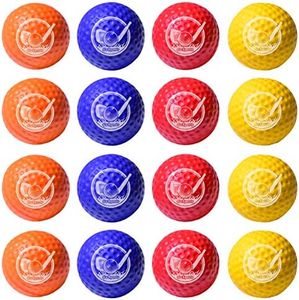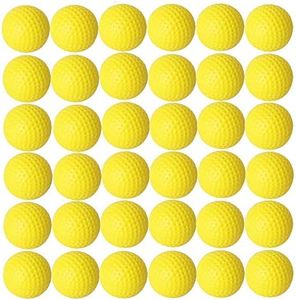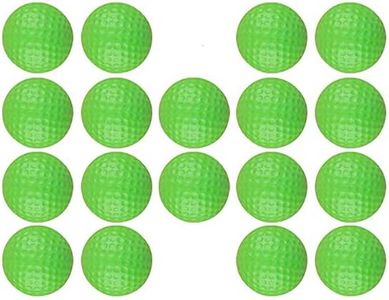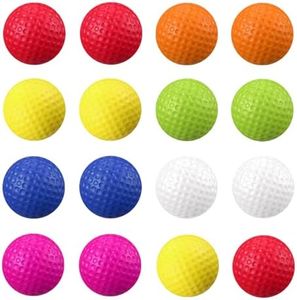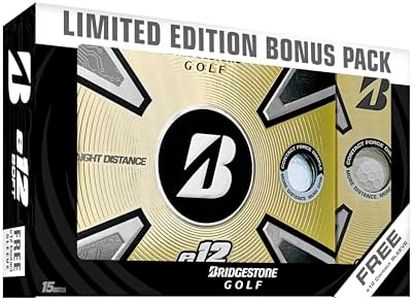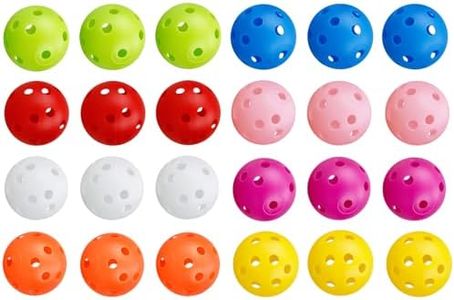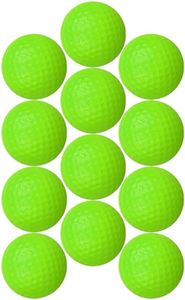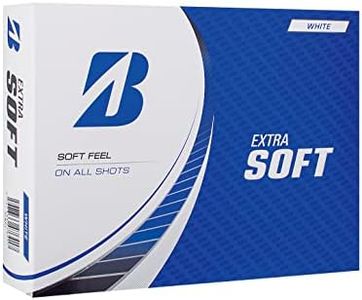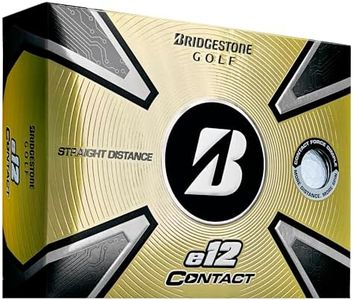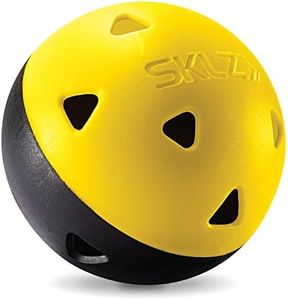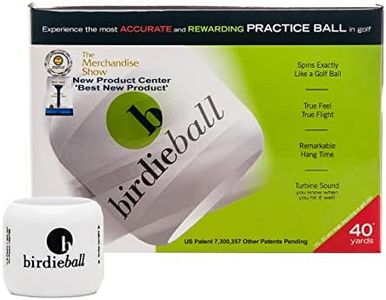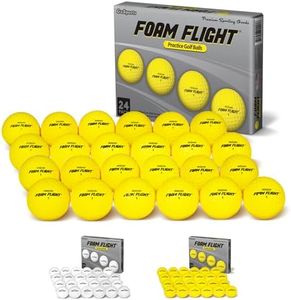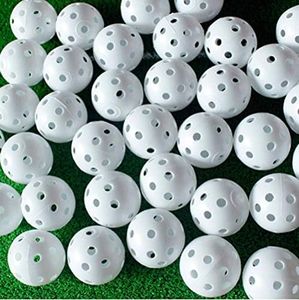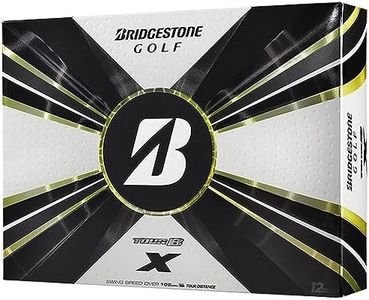We Use CookiesWe use cookies to enhance the security, performance,
functionality and for analytical and promotional activities. By continuing to browse this site you
are agreeing to our privacy policy
10 Best Practice Golf Balls
From leading brands and best sellers available on the web.By clicking on a link to a third party's website, log data is shared with that third party.
Buying Guide for the Best Practice Golf Balls
Choosing the right practice golf balls is all about understanding your practice needs and the environment in which you'll be using them. Practice balls are designed to help golfers of all skill levels work on their swing, accuracy, and overall game without using regular golf balls, which can be expensive and cause damage if used in limited spaces. Consider how and where you'll practice, what aspects of your game you'd like to improve, and how closely you want the practice balls to resemble real golf balls. This approach will help you select practice balls that support effective and convenient practice sessions.MaterialThe material of a practice golf ball greatly influences its feel, flight, and durability. Common materials include foam, plastic, and sometimes rubber blends. Foam balls are soft and safe for indoor use or practice in confined areas, as they don’t travel far or cause damage. Plastic balls are a bit firmer, often with holes to restrict flight distance, making them suitable for outdoor use but still safe for smaller spaces. More advanced practice balls may use specialized materials that mimic the feel and flight of real golf balls more closely. Select the material based on where you'll be practicing—foam for indoors, plastic for durability outside or in shared spaces, and closer-to-real materials if you want a more lifelike experience in a safe environment.
Flight DistanceFlight distance describes how far the practice ball can travel when hit. Some practice golf balls are designed to mimic the full flight of a regular golf ball, while others are intentionally limited to keep them within a safe range. Short-range practice balls are ideal for backyards, indoor practice, or places with restricted space, as they won’t travel as far and reduce the risk of loss or damage. Balls with medium to longer flight are better for outdoor practice fields, allowing you to see more realistic ball flight and trajectory. Choose the flight distance based on your practice space and safety concerns; opt for restricted flight for indoors or small yards, and standard or extended flight if you have access to larger, open areas.
Feel and FeedbackFeel and feedback refer to how similar the practice ball is to a real golf ball in terms of weight, sound, and response upon impact. Good feedback is important for serious practice as it helps you gauge the quality of your shots. Some practice balls are designed to give a more realistic feel and response, which can be helpful if you want to closely simulate on-course play. Others may be lighter and less realistic, but safer for casual or indoor practice. If you’re focused on improving your technical skills or want to transition smoothly to real play, look for practice balls marketed as offering realistic feedback; for casual practice or games with children, less realistic balls are often fine.
DurabilityDurability is concerned with how well the practice ball withstands repeated hitting and potentially rough surfaces. Some balls, especially cheaper plastic or foam options, can develop cracks or lose shape after heavy use. Look for durability features if you’ll be practicing often or with high swing speeds, or if the balls will come into contact with hard surfaces like driveways or walls. Thicker foam and reinforced plastics tend to last longer, while softer balls are more prone to damage. Think about how hard and how often you’ll be practicing when considering the durability needed.
VisibilityVisibility involves how easy it is to spot the practice ball in different environments. Bright colors or high-contrast markings help you find the balls quickly in grass, shrubs, or low-light conditions. This is especially useful for outdoor practice or if you’re sharing a public space. Dark or bland-colored balls can be harder to recover, increasing the chance of losing them. Think about your training environment and how likely you are to misplace practice balls, and opt for highly visible colors if needed.
